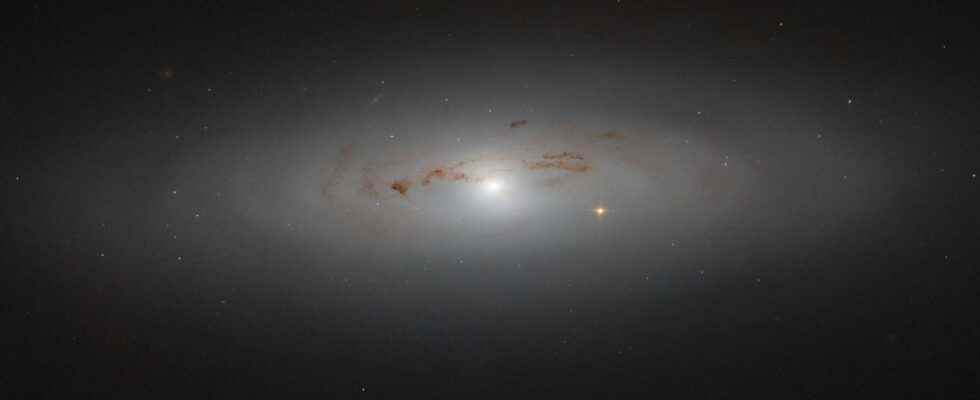Thanks to increasingly efficient telescopes, we are now able to detect primitive galaxies hitherto barely visible because they are hidden behind a thick curtain of cosmic dust. Scientists estimate that 10% to 20% of galaxies would be masked in this way. Their study could provide a better understanding of the formation of the Universe.
You will also be interested
[EN VIDÉO] Black holes, galaxies, nebulae: what would the sky look like if these objects were nearby? A video published by Roscosmos invites us to discover a whole new kind of night sky. Rather than taking us to the far reaches of the Universe, the Russian space agency is bringing the treasures of the cosmos to us, for a dazzling spectacle.
At 29 billionlight years of the Earth, two news galaxies have just been discovered by researchers at the University of Copenhagen in Denmark. Hidden behind a thick layer of cosmic dust, they had hitherto gone completely unnoticed by the hubble telescope. But thanks to giant telescopes like that ofAlma in Chile, this type of colder and darker galaxy is now visible. ” We were looking at a sample of very distant galaxies, which we already knew existed from the images of Hubble. And then we noticed that two of them had neighbors that we didn’t expect to find there at all. Since these galaxies are surrounded by dust, some of their light is blocked, making them invisible to Hubble. », Explains Pascal Oesch, from Cosmic Dawn Center of the Niels-Bohr Institute and co-author of study relating this discovery.
Did you know ?
The two new galaxies, named REBELS-12-2 and REBELS-29-2, have been detected 13 billion light years from Earth. But due to the expansion of the Universe, they are now around 29 billion light years away.
Discover hidden galaxies
By comparing these new galaxies with those known in theuniverse early, that is, those older than 13 billion years, the researchers estimated that 10% to 20% would be hidden in curtains of cosmic dust and therefore still unknown.
There are certainly many more primitive galaxies than we thought
” There are certainly many more primitive galaxies than we thought, assures Pascal Oesch. The new instruments – like the James-Webb telescope, which is much more sensitive than Hubble and capable of studying longer wavelengths – will be a huge step forward in the discovery of these hidden galaxies », Continues the researcher. the James Webb Space Telescope or JSWT has indeed advanced instruments capable of observe very distant objects, who have switched to the spectrum infrared. ” The study of primitive galaxies such as the ones we have discovered will allow us to complete the great puzzle of the formation of the Universe. », Confirms Pascal Oesch. It is estimated that there are between 100 and 200 billion galaxies in the Universe.
Interested in what you just read?
.
fs3
